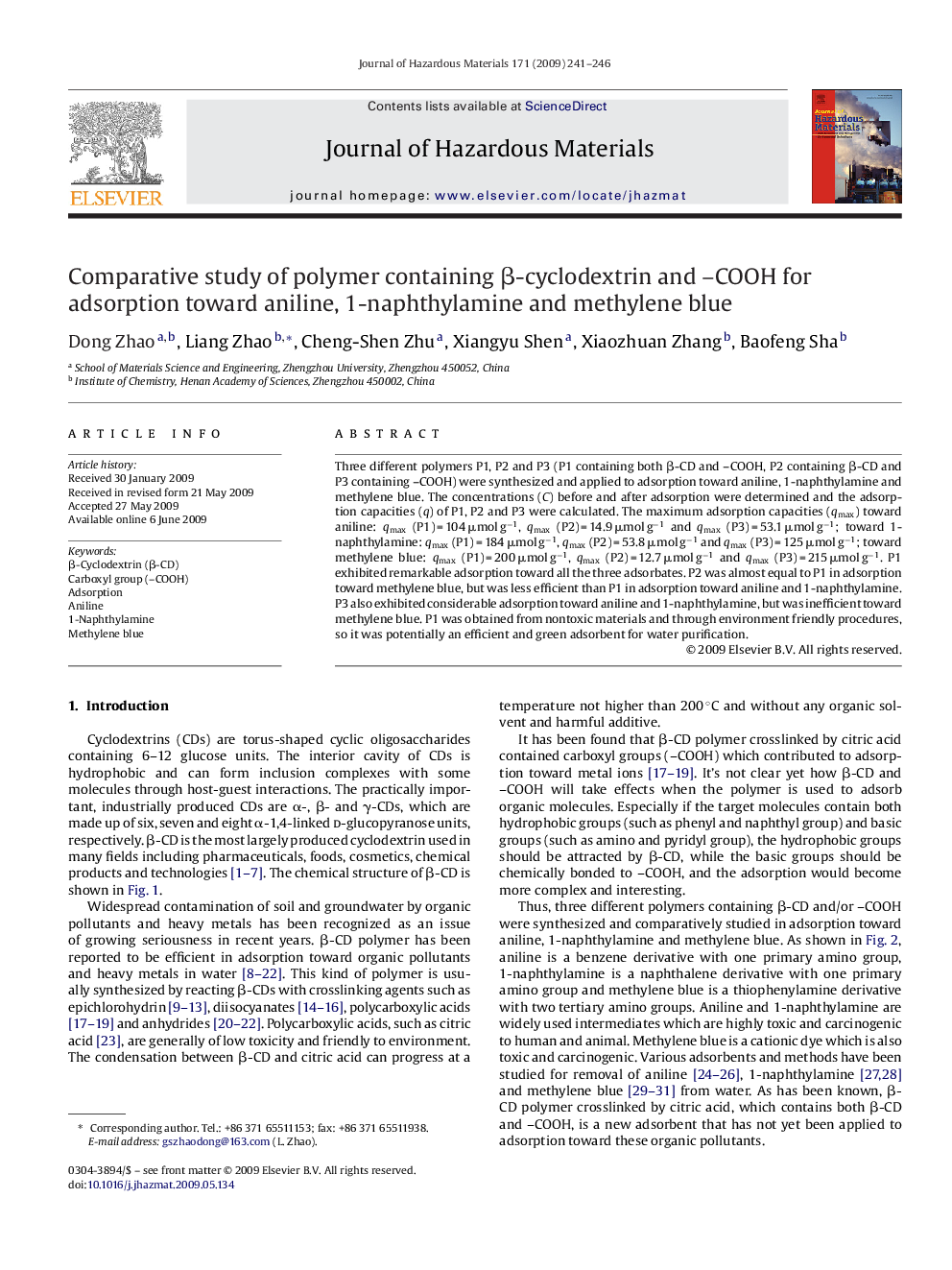| Article ID | Journal | Published Year | Pages | File Type |
|---|---|---|---|---|
| 581127 | Journal of Hazardous Materials | 2009 | 6 Pages |
Abstract
Three different polymers P1, P2 and P3 (P1 containing both β-CD and -COOH, P2 containing β-CD and P3 containing -COOH) were synthesized and applied to adsorption toward aniline, 1-naphthylamine and methylene blue. The concentrations (C) before and after adsorption were determined and the adsorption capacities (q) of P1, P2 and P3 were calculated. The maximum adsorption capacities (qmax) toward aniline: qmax (P1) = 104 μmol gâ1, qmax (P2) = 14.9 μmol gâ1 and qmax (P3) = 53.1 μmol gâ1; toward 1-naphthylamine: qmax (P1) = 184 μmol gâ1, qmax (P2) = 53.8 μmol gâ1 and qmax (P3) = 125 μmol gâ1; toward methylene blue: qmax (P1) = 200 μmol gâ1, qmax (P2) = 12.7 μmol gâ1 and qmax (P3) = 215 μmol gâ1. P1 exhibited remarkable adsorption toward all the three adsorbates. P2 was almost equal to P1 in adsorption toward methylene blue, but was less efficient than P1 in adsorption toward aniline and 1-naphthylamine. P3 also exhibited considerable adsorption toward aniline and 1-naphthylamine, but was inefficient toward methylene blue. P1 was obtained from nontoxic materials and through environment friendly procedures, so it was potentially an efficient and green adsorbent for water purification.
Related Topics
Physical Sciences and Engineering
Chemical Engineering
Chemical Health and Safety
Authors
Dong Zhao, Liang Zhao, Cheng-Shen Zhu, Xiangyu Shen, Xiaozhuan Zhang, Baofeng Sha,
